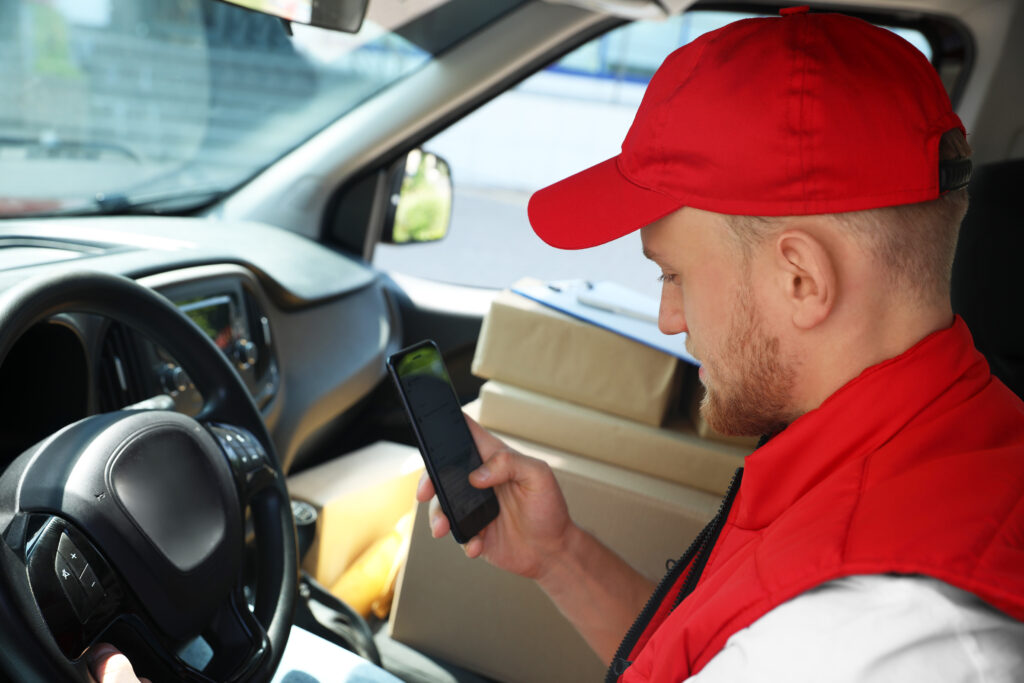Research from mobile computer developer Scandit has identified how the impact of Covid-19 has pushed Europe-based last-mile companies to innovate.
In the face of unprecedented hurdles and shifting consumer demands, European operations are more likely to invest in new services (14.3%) such as pickup and drop-off (PUDO) and new innovations (20.6%), including real-time delivery changes. This is in contrast to their North American counterparts of which just 5.9% prioritize new offerings with a heavier focus on meeting today’s demands. European firms are also more likely to invest in augmented reality (AR) today or in the future (69.2%) than those in North America (58.8%).
The research, conducted across Europe and North America by ITTS and VDC Research respectively, interviewed 118 senior decision makers from many of the world’s largest postal and logistics providers and found that companies who use smartphones during last-mile delivery tend to be more innovation-focused, providing an advantage to meet increased customer expectations.
Local investment
Scandit’s research highlights that different challenges and investment priorities exist across Europe. For example, companies in Eastern Europe and the Nordics are most focused on adding new apps and features (43.8%) and technology that supports new services (18.8%) such as PUDO. This aligns with one of their most cited local challenges – the need to provide new customer services (33%) – and demonstrates a positive step that they are evolving their offering to improve the customer experience in their region.
Western Europe including Great Britain is more evenly balanced in its technology investment plans between improving the fundamentals such as delivery app enhancements (37%) and offering new services (18.5%) or contactless processes (25.9%). However, Western Europe is significantly more open than its peers in southern European countries when it comes to deploying new capabilities and services. For example, 18.5% plan to invest in new apps and features in Western Europe, compared to just 5% in southern Europe, whose top priority is enhancing their current delivery app (60%).
Augmented reality in the last mile
Regardless of region, the majority of enterprises perceive that augmented reality (AR) technology will have a huge impact on last-mile delivery. Over three-quarters (76%) of enterprises globally believe AR is an important last-mile technology, with over one-third (34%) of survey respondents stating that it is a priority for them to invest in today. Businesses who use smartphones are the most likely to recognize the importance of AR, with 85.8% believing it is important and 42.9% thinking it is important to invest in it now. This further suggests that the companies using smartphones with computer vision enabled apps are already on the path toward future innovation.
Pat Nolan, senior research analyst at VDC Research, said, “AR is an important key to unlocking greater competitive performance and differentiation for last-mile delivery operations, with over 34% of global respondents saying it is on their shortlist of technology investment considerations. A last-mile AR solution can help a driver, for example, quickly identify a specific parcel in a densely packed delivery van or see real-time delivery instructions. The use cases for AR here reduce some of the stress placed on frontline workers’ shoulders and make the operation more efficient overall.”
AR is likely to be essential in overcoming current and future last-mile challenges. For example, AR can significantly help with reducing last-mile process inefficiencies and onboarding drivers. Instructions delivered via AR overlays are beneficial with training inexperienced drivers or contract workers. This is especially important when it comes to scaling for peaks in demand like Christmas and to help overcome current driver shortages.
The right deployment strategy
As well as being more open to innovation, half of the enterprises that are using smartphones in the last mile are also currently leveraging a bring your own device (BYOD) strategy. Among European respondents, the biggest driver for BYOD is reducing costs (57.1%) and replacing aging hardware (42%), which helps address their major challenge of balancing profitability. BYOD is a logical investment for last-mile delivery because it can almost completely eliminate hardware costs. This helps businesses to scale and be flexible, which is especially important with continuous peak periods. It is, therefore, unsurprising that 100% of dedicated device users in Eastern Europe and the Nordics stated they have or are considering switching to smartphones.
Samuel Mueller, CEO and co-founder at Scandit, said, “While Covid-19 and supply chain issues across Europe have created new challenges for last-mile delivery, it has also accelerated solutions that were long in the pipeline – for example, a heavier reliance on smartphone use and BYOD. Especially interesting, however, are the varying priorities across Europe, but it’s positive to see that these are being recognized and investments made accordingly. It signifies that logistics companies clearly see the impact that issues in the last mile can have on customers and how essential it is to address them today and into the future.”


